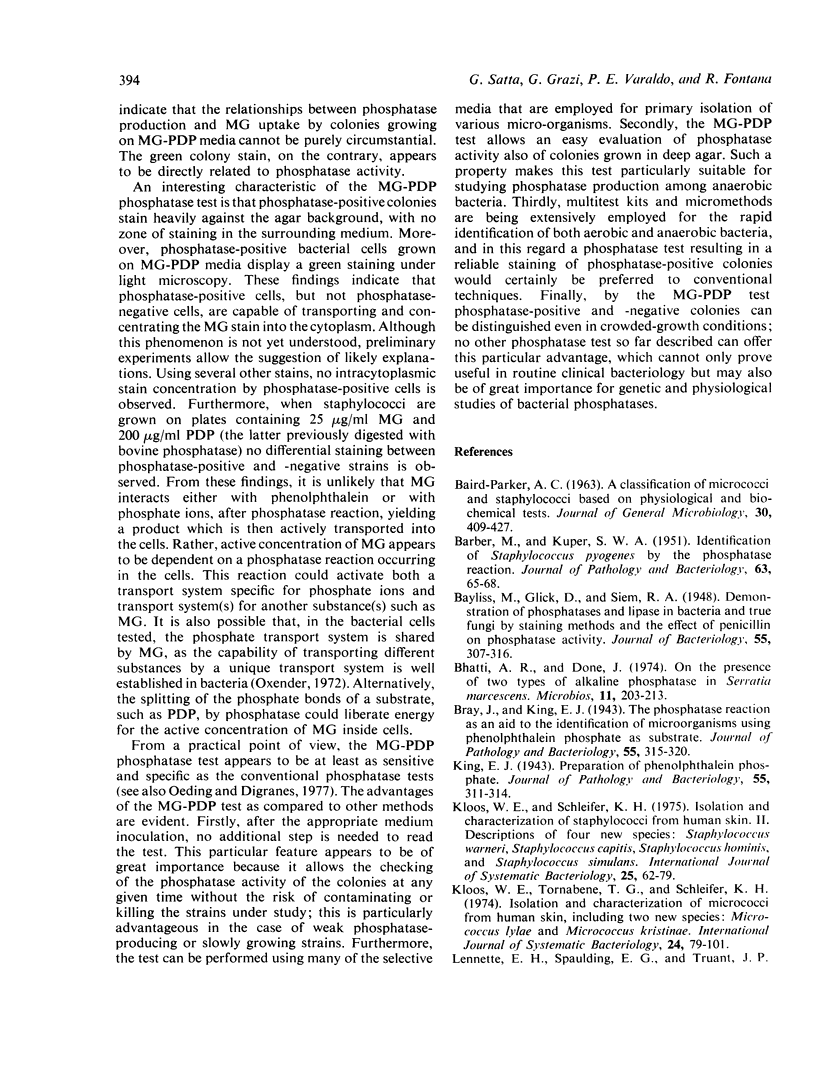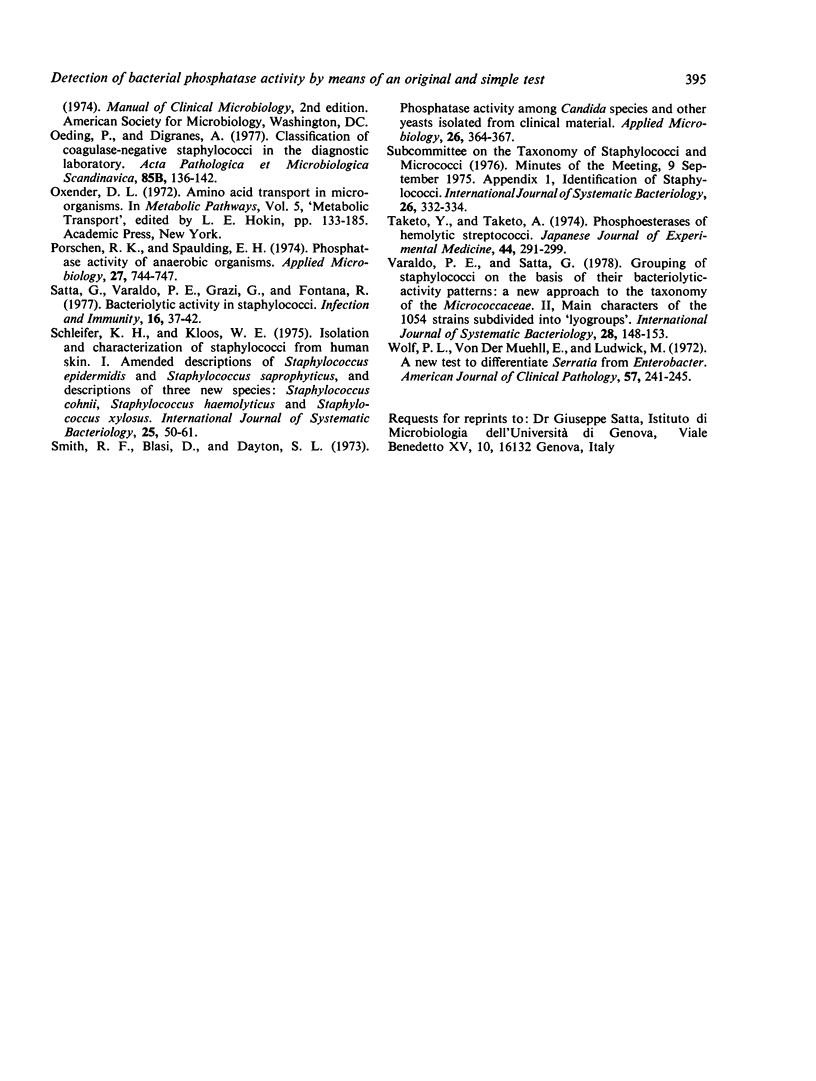Abstract
A new test for the detection of bacterial phosphatase activity has been devised. The test is performed using agar media containing both methyl green (MG) and phenolphthalein diphosphate (PDP); in these media phosphatase-producing strains grow deep-green-stained colonies whereas non-producing strains do not. A total of 739 different strains were tested, including 593 staphylococci, 95 micrococci, 11 streptococci, 10 corynebacteria, 14 enterobacteria, and 16 candidae. All strains found phosphatase-positive according to the conventional phosphatase test displayed deep-green-stained colonies on MG-PDP media, whereas all phosphatase-negative strains showed unstained colonies on the same media. The main advantages of the present phosphatase test as compared with other conventional ones are that it is more simple to perform, it can reveal the phosphatase activity of colonies grown in deep agar, and can be incorporated into commercial multitest kits.
Full text
PDF




Selected References
These references are in PubMed. This may not be the complete list of references from this article.
- BAIRD-PARKER A. C. A classification of micrococci and staphylococci based on physiological and biochemical tests. J Gen Microbiol. 1963 Mar;30:409–427. doi: 10.1099/00221287-30-3-409. [DOI] [PubMed] [Google Scholar]
- BARBER M., KUPER S. W. A. Identification of Staphylococcus pyogenes by the phosphatase reaction. J Pathol Bacteriol. 1951 Jan;63(1):65–68. doi: 10.1002/path.1700630108. [DOI] [PubMed] [Google Scholar]
- Bayliss M., Glick D., Siem R. A. Demonstration of Phosphatases and Lipase in Bacteria and True Fungi by Staining Methods and the Effect of Penicillin on Phosphatase Activity. J Bacteriol. 1948 Mar;55(3):307–316. doi: 10.1128/jb.55.3.307-316.1948. [DOI] [PMC free article] [PubMed] [Google Scholar]
- Oeding P., Digranes A. Classification of coagulase-negative staphylococci in the diagnostic laboratory. Acta Pathol Microbiol Scand B. 1977 Apr;85(2):136–142. doi: 10.1111/j.1699-0463.1977.tb01687.x. [DOI] [PubMed] [Google Scholar]
- Porschen R. K., Spaulding E. H. Phosphatase activity of anaerobic organisms. Appl Microbiol. 1974 Apr;27(4):744–747. doi: 10.1128/am.27.4.744-747.1974. [DOI] [PMC free article] [PubMed] [Google Scholar]
- Satta G., Varaldo P. E., Grazi G., Fontana R. Bacteriolytic activity in staphylococci. Infect Immun. 1977 Apr;16(1):37–42. doi: 10.1128/iai.16.1.37-42.1977. [DOI] [PMC free article] [PubMed] [Google Scholar]
- Smith R. F., Blasi D., Dayton S. L. Phosphatase activity among Candida species and other yeasts isolated from clinical material. Appl Microbiol. 1973 Sep;26(3):364–367. doi: 10.1128/am.26.3.364-367.1973. [DOI] [PMC free article] [PubMed] [Google Scholar]
- Taketo Y., Taketo A. Phosphoesterases of hemolytic streptococci. Jpn J Exp Med. 1974 Aug;44(4):291–299. [PubMed] [Google Scholar]
- Wolf P. L., von der Muehll E., Ludwick M. A new test to differentiate Serratia from Enterobacter. Am J Clin Pathol. 1972 Feb;57(2):241–243. doi: 10.1093/ajcp/57.2.241. [DOI] [PubMed] [Google Scholar]


